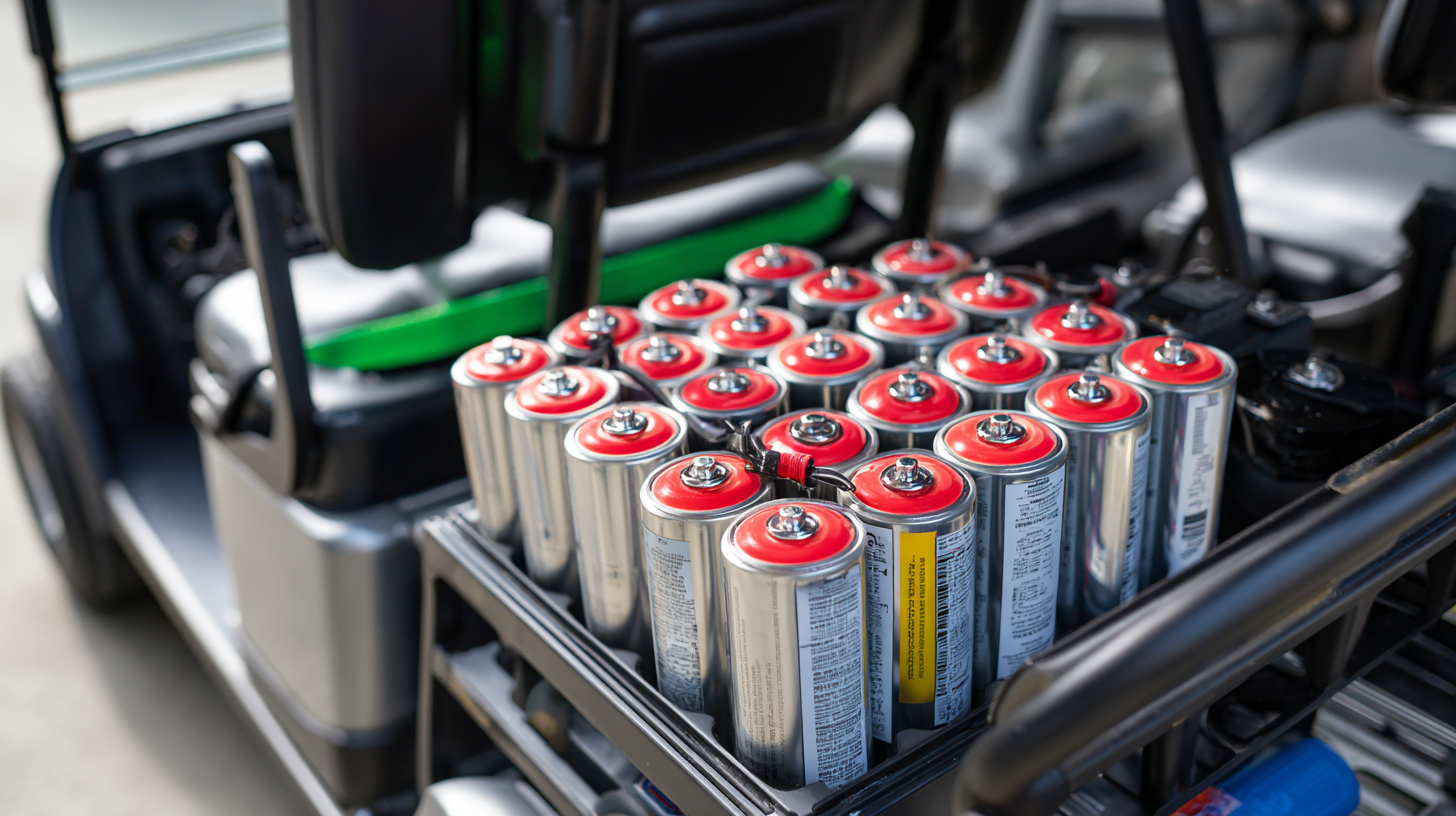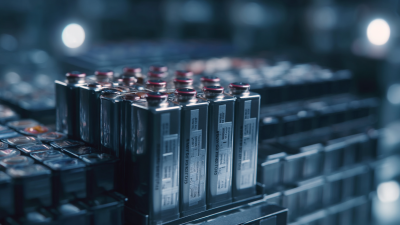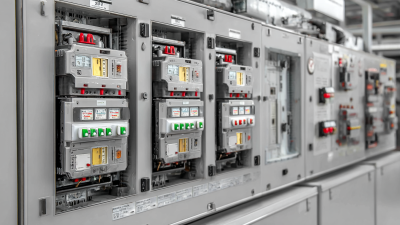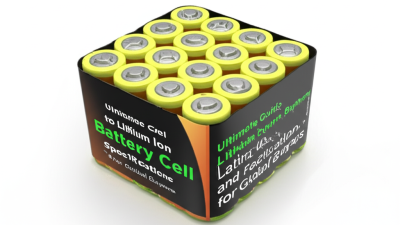Unlocking the Power: The Essential Guide to Lithium Golf Cart Batteries for Enthusiasts
In the evolving landscape of golf cart technology, "Lithium Golf Cart Batteries" have emerged as a game-changer for enthusiasts seeking enhanced performance and longevity. As per a recent industry report by Allied Market Research, the global lithium battery market is projected to reach $100 billion by 2025, driven by the increasing adoption of electric vehicles, including golf carts. Unlike traditional lead-acid batteries, lithium alternatives offer a longer lifespan, allowing for up to 3,000 charge cycles compared to only 500 for their lead-acid counterparts. Additionally, they provide higher energy density, which translates to improved range and faster charging times. This essential guide will delve into the benefits, types, and vital considerations surrounding lithium golf cart batteries, empowering enthusiasts to make informed decisions that elevate their golfing experience.

Understanding Lithium Golf Cart Batteries: Key Features and Advantages
Lithium golf cart batteries have emerged as a game-changer for enthusiasts seeking power and efficiency on the green. Unlike traditional lead-acid batteries, lithium batteries offer a far superior energy-to-weight ratio, meaning golfers can enjoy longer rides without the bulk. With a typical lifespan of up to 10 years or more, these batteries reduce the frequency of replacements, showcasing both economic and environmental benefits. Their lightweight nature allows for better maneuverability of the cart, providing a smoother ride overall.
In addition to their longevity, lithium batteries boast faster charging times. In many cases, they can reach a full charge in just a few hours, compared to the longer charging cycles required by lead-acid counterparts. This feature is particularly beneficial for avid golfers who want to maximize their time on the course rather than waiting for their carts to power up. Additionally, lithium batteries maintain their performance over a wider temperature range, ensuring consistency in various weather conditions. These advantages make lithium golf cart batteries an attractive option for those looking to enhance their golfing experience through reliable and efficient power solutions.
Choosing the Right Lithium Battery for Your Golf Cart: A Step-by-Step Guide
When it comes to selecting the right lithium battery for your golf cart, enthusiasts must consider several essential factors that influence both performance and longevity. Lithium batteries are known for their exceptional energy density and lightweight properties, making them a superior choice over traditional lead-acid options. Industry reports indicate that lithium batteries can last up to 10 times longer than their lead-acid counterparts, providing over 2,000 charge cycles, which is especially beneficial for avid golfers who frequent the course.
Moreover, choosing the right lithium battery involves understanding factors such as capacity, voltage, and compatibility with your golf cart's system. Research shows that a lithium battery with a higher amp-hour rating will allow for extended use without needing frequent recharging, making it vital for golfers who require reliability during long rounds. The growing trend towards electric golf trolleys and push carts indicates a strong demand for efficient power solutions; thus, opting for lithium batteries not only enhances performance but also reduces maintenance efforts, aligning with the preferences of modern golf enthusiasts.

Installation Process: How to Properly Install Your Lithium Golf Cart Battery
When it comes to upgrading your golf cart with lithium batteries, understanding the installation process is crucial for enthusiasts who want to maximize performance and longevity. First, ensure you have the appropriate tools and safety equipment. Disconnect the existing lead-acid battery system before beginning the installation of your lithium battery. This step is vital to avoid any electrical mishaps and to protect the delicate components of your golf cart.
Once the old batteries are removed, carefully position your new lithium battery in the designated compartment. Make sure to connect the positive and negative terminals correctly, as improper connections can lead to battery failure or even fire hazards. Additionally, it’s important to secure the battery using mounting brackets to prevent movement during operation. As electric vehicles and charging stations become more prevalent, understanding such installation processes not only enhances your golf cart's mobility but also aligns with the trends in electric energy consumption and utilization. Proper installation ensures efficiency, safety, and maximizes the benefits of your lithium battery investment.

Maximizing Performance: Tips for Maintaining and Caring for Lithium Batteries
Maintaining lithium golf cart batteries is essential for enthusiasts who want to maximize performance and longevity. One crucial tip is to
avoid discharging the battery completely. Similar to how maintaining device batteries at optimal charge levels prolongs their life, lithium batteries thrive when kept between
20% to 80% of their capacity. Regularly charging your battery within this range can help prevent degradation and ensure consistent power.
Additionally, temperature control plays a vital role in battery management. Just as it's important to keep devices cool to avoid overheating, lithium golf cart batteries should be stored and used in moderate temperatures.
Extreme heat can lead to reduced performance and shorter lifespan. Using a quality Battery Management System (BMS) can also enhance battery longevity by monitoring and balancing charge levels, thus avoiding overcharging or deep discharging. By implementing these practices, you can ensure your lithium golf cart batteries perform at their best for countless rides ahead.
Troubleshooting Common Issues with Lithium Golf Cart Batteries: Solutions and Tips
Lithium golf cart batteries are renowned for their efficiency and longevity, but like any technology, they can encounter issues that may hinder performance. One common problem is the battery management system (BMS) fault, which can originate from overheating or extreme discharging. To troubleshoot this, it's essential to regularly monitor the battery’s temperature and ensure it operates within the manufacturer's recommended range. Implementing a smart charger designed specifically for lithium batteries can prevent overcharging and help maintain battery health over time.
Another issue that enthusiasts may face is diminished capacity or range. This can often be attributed to age or if the batteries were not properly maintained in terms of voltage levels. To tackle this, check the battery terminals for corrosion, which can impede performance. Performing routine capacity tests can also provide insights into whether your batteries are still effective or if they require replacement. By addressing these common problems with proactive maintenance and timely interventions, golf cart owners can significantly enhance the lifespan and functionality of their lithium batteries.
Unlocking the Power: The Essential Guide to Lithium Golf Cart Batteries for Enthusiasts
| Issue | Description | Symptoms | Solutions |
|---|---|---|---|
| Overheating | Battery temperature exceeds safe limits due to high current draw. | Battery feels hot to the touch, reduced performance. | Reduce load, ensure proper ventilation, use thermal management solutions. |
| Low Voltage | Battery voltage drops below recommended levels. | Slow performance, warning lights activated. | Charge immediately, inspect for parasitic loads. |
| Short Cycle Life | Battery fails to hold a charge over expected cycles. | Rapid capacity loss, frequent recharging required. | Avoid deep discharges, use a suitable charger. |
| BMS Failures | Battery Management System fails to operate correctly. | Inconsistent performance, charging issues. | Check BMS connections, reset system if possible. |
| Corrosion | Build-up of corrosion on terminals and connections. | Poor connectivity, intermitted power supply. | Clean terminals with a wire brush, apply protective terminal grease. |
Related Posts
-

Exploring Alternative Energy Solutions with Lithium Metal Batteries
-

How to Select the Right Lithium Ion Battery Cell for Your Energy Needs
-

7 Essential Tips for Choosing the Right Vacuum Circuit Breaker
-

Ultimate Guide to the Best Lithium Ion Battery Cell Specifications and Features for Global Buyers
-

5 Top Battery Storage Solutions Revolutionizing Energy Management in 2023
-

How to Maximize Efficiency with Battery Storage Technology
